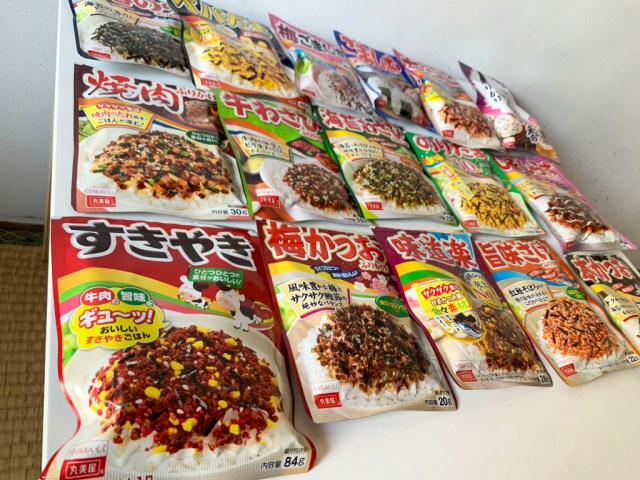
Which flavors were crowned the Elite Four out of 16 total entries?
Our Japanese-language reporter Seiji Nakazawa is probably best known from his hair transplant surgery saga and Find-a-Girlfriend project of days past. These days, he’s content spending his time on smaller-scale initiatives such as hosting the Grand Prix of Marumiya Furikake taste test.
Furikake refers to any seasoning that is sprinkled over a bowl of plain rice, instantly spicing it up (pun intended). Marumiya is perhaps the most popular brand on the market, offering several series and types of furikake. In particular their nori seaweed and egg flavor is a pantry staple in Japan. After noticing that that Marumiya’s pouch furikake series consisted of a total of 16 flavors, of which he had only ever tried the nori egg type, Seiji decided to gather them all and hold one giant furikake taste test. It took him about a week to assemble all 16 of them by means of local supermarkets and online stores, and he almost cried when he finally got his hands on the final pepper egg flavor.
▼ All 16 of Marumiya’s pouch furikake series
So what were his initial thoughts based on the names of the flavors alone? The yakiniku, beef wasabi, and sukiyaki meat-based trio grabbed his attention from the start. Marumiya’s pouch furikake contain dried, crispy bits of ingredients, so would the umami flavor of the meat really come through? He predicted that out of the trio above the beef wasabi flavor had the most potential to draw out the pure meat flavor.
Similarly, the bonito line–consisting of original bonito, plum bonito, and ajidoraku–also intrigued him. Keeping in mind the power of the bonito in the ajidoraku type, he thought that that one had the potential to be the victor.
We’ll now introduce the 12 contenders that, while solid picks, didn’t make Seiji’s final cut. Each entry is accompanied by his brief notes at the time of tasting.
Rocky seashore nori (磯香のり): As soon as he broke open the pouch Seiji could smell the ocean. This one had a moderate saltiness and the nori’s flavor was at maximum strength.
Pepper egg: (ぺパたま): The strong flavor of the black pepper lent depth to the sweetness of the egg. It also left a bit of a spicy aftertaste.
Cod roe (たらこ): It tasted like cod roe were added to an instant noodle packet from the popular Spa-Oo brand.
Sesame and salt (ごましお): The salt flavor came through stronger than the sesame. Simple but effective.
Beef wasabi (牛わさび): There was only a hint of wasabi–the taste was dulled. A stronger sensation would have been nice.
Japanese plum sesame salt (梅ごましお): The sweetness of the Japanese plum (technically an apricot) coupled with the sesame saltiness resulted in a vibrant taste. However, the texture of the flower “candies” felt out of sorts with typical furikake texture.
Shiso aroma (しその香): Crushed shiso (perilla leaves) appeared like dried tea leaves. The taste was reminiscent of Japanese plum kelp tea.
Yakiniku (焼肉): While yakiniku refers to grilled meat, this furikake strongly reminded Seiji of the Yakiniku Santaro line of cheap sweets. It was good but he couldn’t shake off that sweets-instead-of-meat feeling.
Original bonito (本かつお): This was the pure umami flavor of bonito. A simple but strong offering.
Ajidoraku (味道楽): The addition of egg flakes to bonito resulted in a new depth of flavor. He enjoyed it but the main taste was definitely oriented towards the bonito.
Japanese plum bonito (梅かつお): A powerful blend of nori and Japanese plum. He wished the bonito flavor came through more clearly.
Umami salmon (旨味さけ): This was the rich, umami taste of salmon. The sweetness and the salmon flavor ran deeply in parallel.
Next, we’ll introduce introduce Seiji’s selection for the Elite Four Furikake. These were the best of the best that he kept coming back to after multiple samplings. Ready?
Nori and egg (のりたま): No wonder this one is a household staple. Its balance between the richness of flavor and salt seasoning was sublime. The flavor stimulated Seiji’s palate, and while it wasn’t overpowering, nothing was lacking, either. It all came back to being the perfect marriage of flavors within not only the Elite Four but all flavors combined.
Sukiyaki (すきやき): It really tasted like sukiyaki. On top of the umami flavor of the meat shining through loud and clear, the sweetness of the egg was also present. He was floored that furikake could taste so much like actual meat. Interestingly, this one seemed somehow different in nature than the other Marumiya offerings, perhaps being jilted by an overall sweetness. In terms of raw flavor power it was probably the most subtle of the Elite Four.
Nori wasabi (海苔わさび): The sharpness of the wasabi pierced his tongue in the midst of the nori flavor. He dubbed it the furikake offering most likely to appeal to adult palates out of the Elite Four. Don’t be afraid to judge the critics.
Shiso shirasu (しそしらす): This time the shiso was coupled with crispy shirasu, or juvenile sardines. Threads of Japanese plum added a hint of flavor but the shirasu remained the main force here. It tasted amazing on top of a bowl of rice and he figured it would go equally well inside onigiri or bento–it was the most versatile flavor of the Elite Four.
So there you have it–the results of Seiji’s Grand Prix of Marumiya Furikake. At the end of the day, all 16 of the furikake flavors had their own unique elements to offer and all of them stood their ground. While he did enjoy certain ones more than others, he didn’t consider there to be any losses within the lineup. It all depends what you’re in the mood for on a particular day.
Source: Marumiya
All images © SoraNews24
● Want to hear about SoraNews24’s latest articles as soon as they’re published? Follow us on Facebook and Twitter!
[ Read in Japanese ]

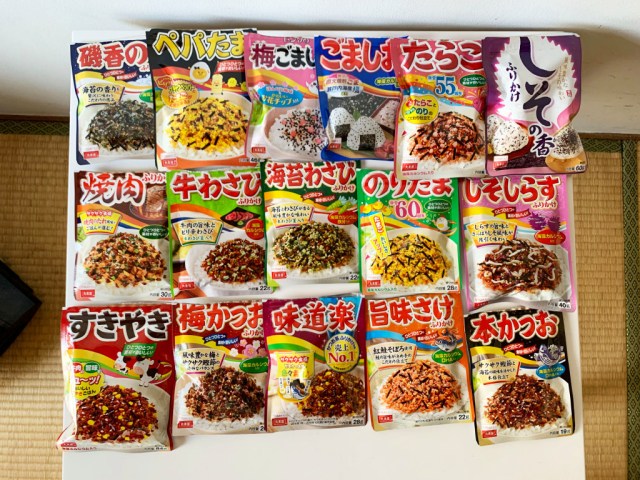
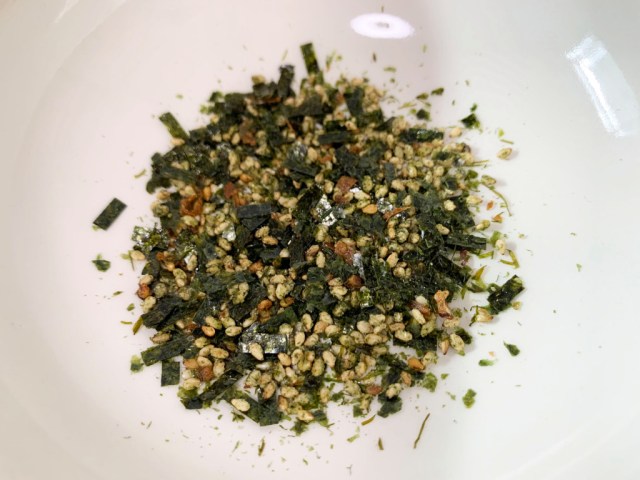
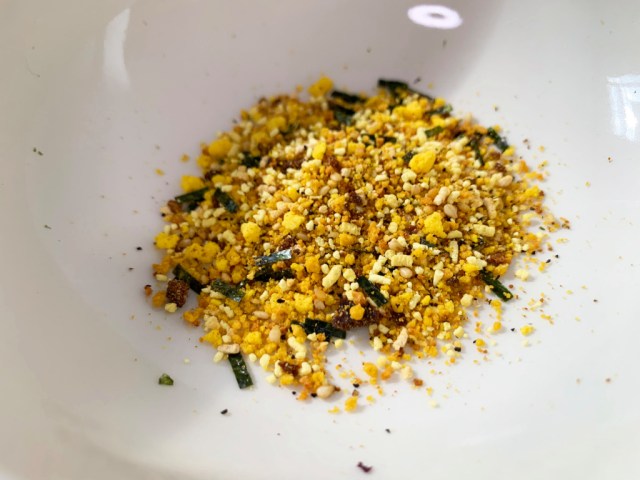
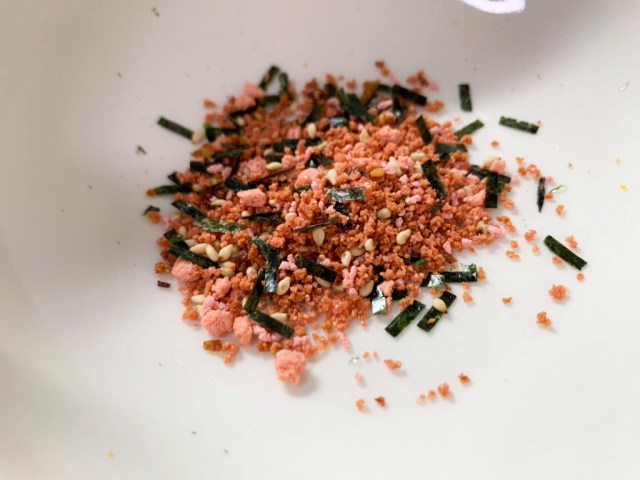
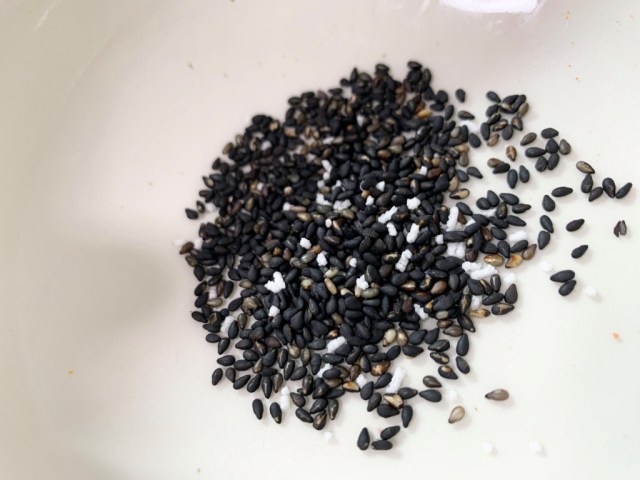
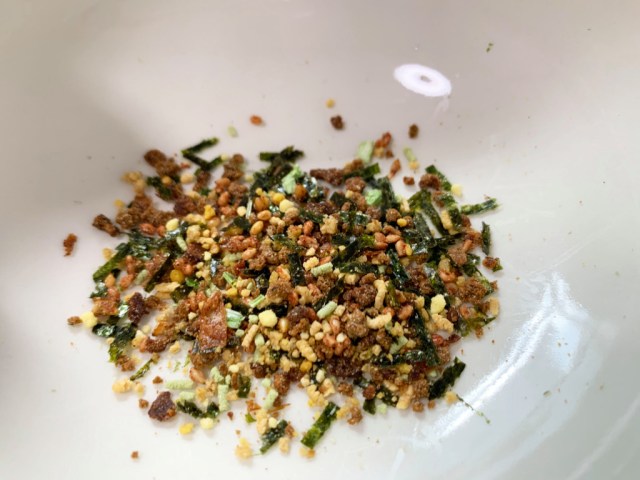
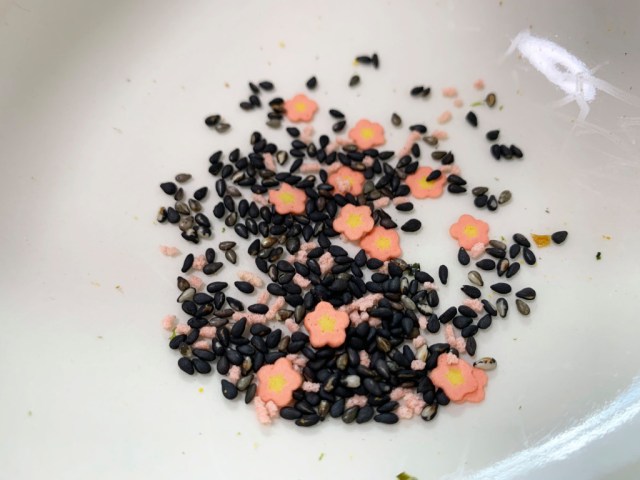
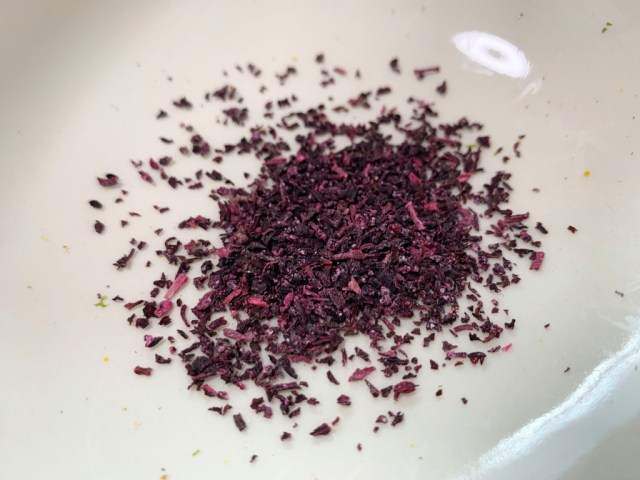
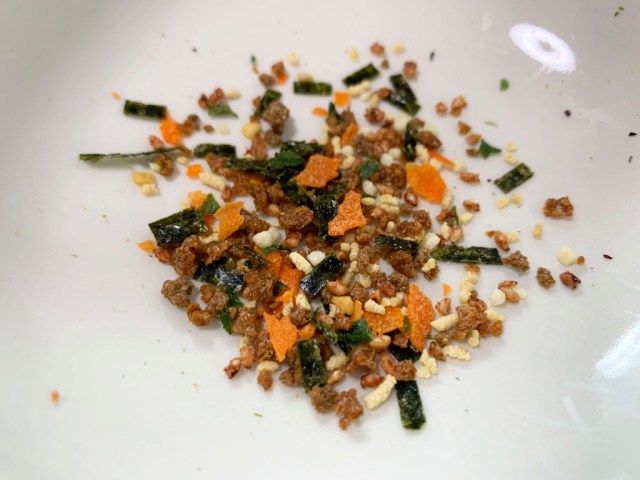
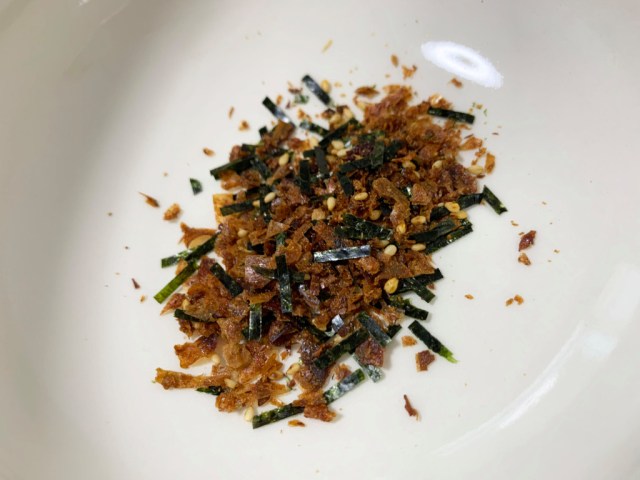
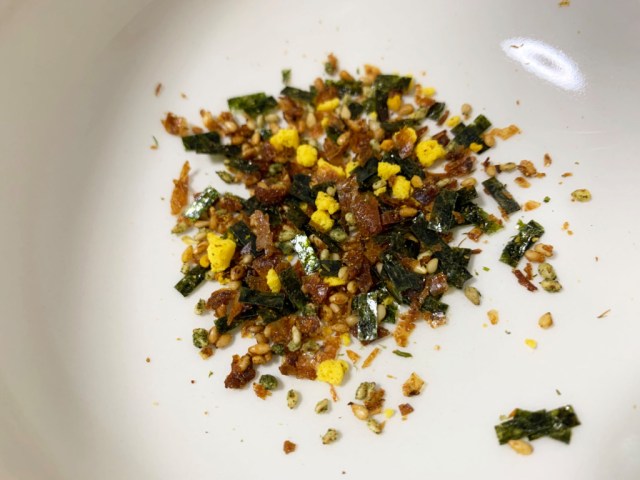

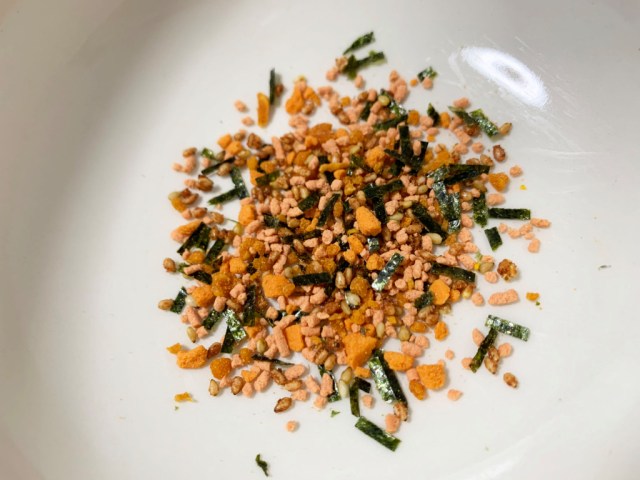

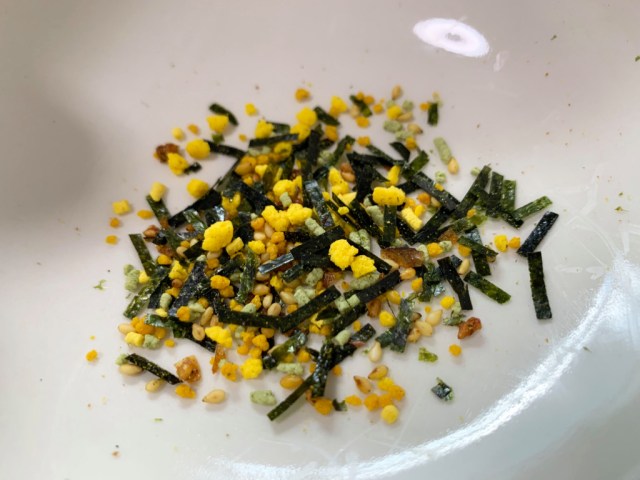
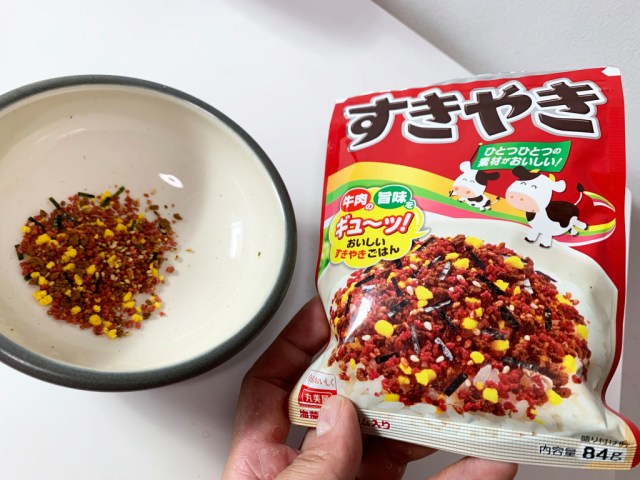
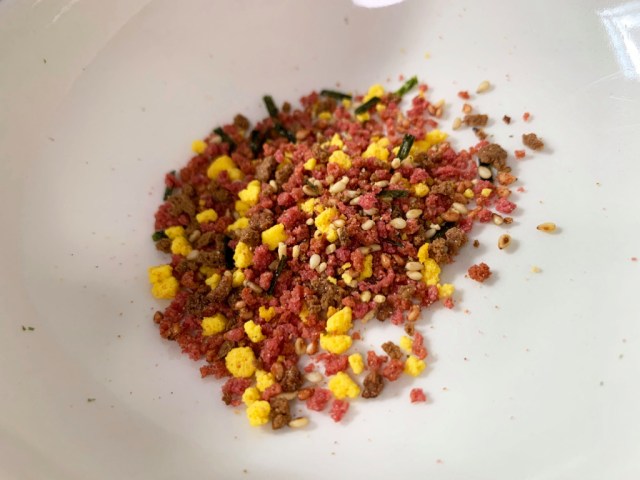
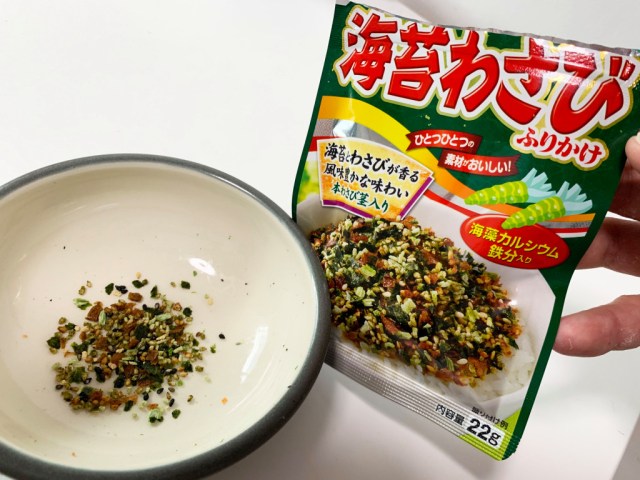
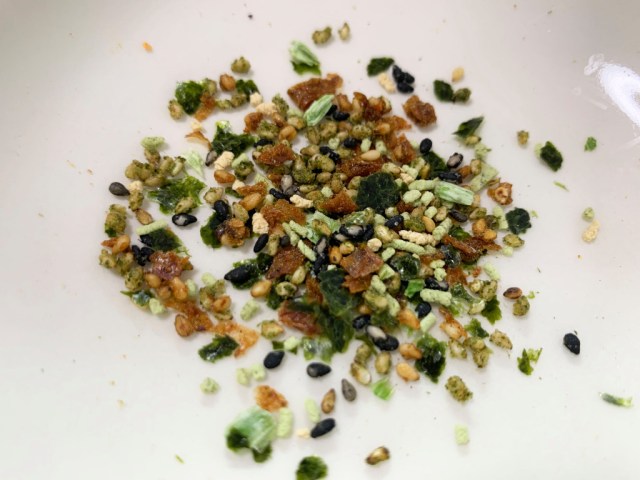
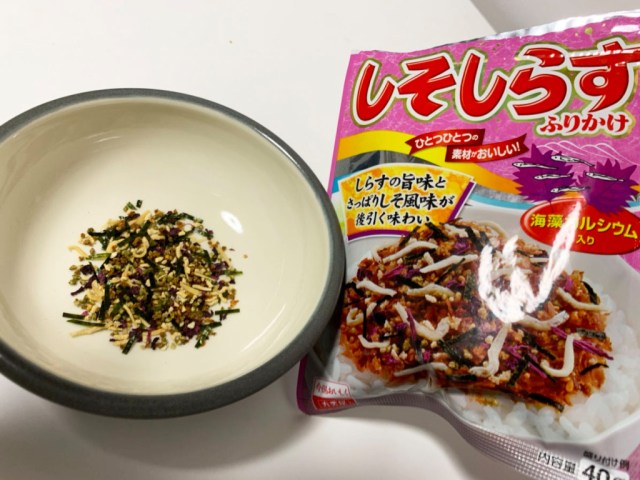
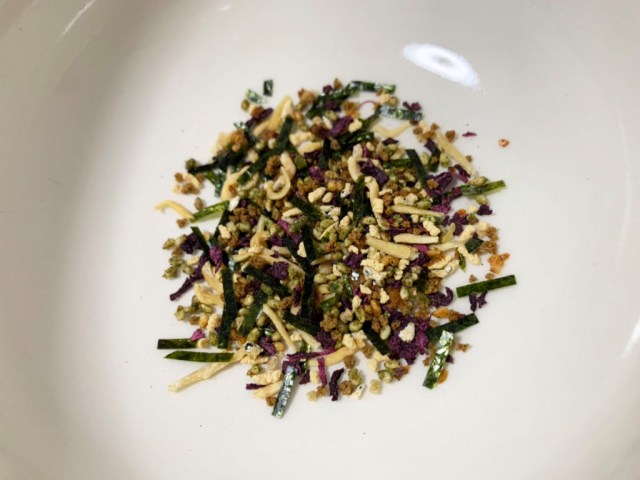
 Ultimate bachelor chow recipe: Cheeseburger-style furikake toast【SoraKitchen】
Ultimate bachelor chow recipe: Cheeseburger-style furikake toast【SoraKitchen】 Seven fantastic furikake flake flavors to liven up your bowl of white rice
Seven fantastic furikake flake flavors to liven up your bowl of white rice Furikake rice toppings gaining popularity in US, but are Americans doing it wrong?
Furikake rice toppings gaining popularity in US, but are Americans doing it wrong? Pokémon Slowpoke Powdered Rice Topping tastes like liquid for noodles【Taste test】
Pokémon Slowpoke Powdered Rice Topping tastes like liquid for noodles【Taste test】 Neco Meshi: The line of Japanese snacks that both you and your cat can eat! 【Taste test】
Neco Meshi: The line of Japanese snacks that both you and your cat can eat! 【Taste test】 Japanese beef bowl chain Sukiya’s 2026 Smile Box lucky bag basically pays for itself
Japanese beef bowl chain Sukiya’s 2026 Smile Box lucky bag basically pays for itself Hayao Miyazaki says Happy New Year to Studio Ghibli fans with new art for Year of the Horse
Hayao Miyazaki says Happy New Year to Studio Ghibli fans with new art for Year of the Horse What did Shibuya really look like after the crowds on New Year’s Day?
What did Shibuya really look like after the crowds on New Year’s Day? 7 great places to see Mt. Fuji from without having to climb it
7 great places to see Mt. Fuji from without having to climb it TeamLab Planets: Walk up a waterfall and catch koi fish at new digital art museum in Tokyo
TeamLab Planets: Walk up a waterfall and catch koi fish at new digital art museum in Tokyo Coca-Cola Japan unveils new sakura design bottle for cherry blossom season 2019
Coca-Cola Japan unveils new sakura design bottle for cherry blossom season 2019 Ghibli Museum Attracts 10 Million Visitors
Ghibli Museum Attracts 10 Million Visitors Epic cutlet sandwiches in Osaka are the best Shinkansen bento
Epic cutlet sandwiches in Osaka are the best Shinkansen bento Lacquerware supplier to emperor of Japan and Pokémon team up for new tableware
Lacquerware supplier to emperor of Japan and Pokémon team up for new tableware 7-Eleven Japan’s ramen-cooking robot whipped us up a bowl of noodles【Taste test】
7-Eleven Japan’s ramen-cooking robot whipped us up a bowl of noodles【Taste test】 Starbucks Japan ready to get Year of the Horse started with adorable drinkware and plushies【Pics】
Starbucks Japan ready to get Year of the Horse started with adorable drinkware and plushies【Pics】 We found possibly the quietest Japanese-style hotel in Tokyo’s bustling Shinjuku district
We found possibly the quietest Japanese-style hotel in Tokyo’s bustling Shinjuku district Cup Noodle tries an authentic Jiro-style ramen, but something’s not quite right
Cup Noodle tries an authentic Jiro-style ramen, but something’s not quite right Hello Kitty Choco Egg figures are an adorable trip through three periods of Japanese pop culture【Pics】
Hello Kitty Choco Egg figures are an adorable trip through three periods of Japanese pop culture【Pics】 Japan’s oldest largetooth sawfish in captivity back on display in Mie Prefecture
Japan’s oldest largetooth sawfish in captivity back on display in Mie Prefecture Cyberpunk anime meets traditional culture in Ghost in the Shell gold leaf Japanese changing screens
Cyberpunk anime meets traditional culture in Ghost in the Shell gold leaf Japanese changing screens The best Starbucks Japan Frappuccinos we want to drink again in 2026
The best Starbucks Japan Frappuccinos we want to drink again in 2026 We revisited Sweets Paradise after a decade to see if Japan’s dessert buffet still delivers
We revisited Sweets Paradise after a decade to see if Japan’s dessert buffet still delivers 7-Eleven Japan starts new temporary luggage storage service in over 300 branches
7-Eleven Japan starts new temporary luggage storage service in over 300 branches Disillusionment at Tsukiji’s tourist-target prices led us to a great ramen restaurant in Tokyo
Disillusionment at Tsukiji’s tourist-target prices led us to a great ramen restaurant in Tokyo Starbucks teams up with 166-year-old Kyoto doll maker for Year of the Horse decorations【Photos】
Starbucks teams up with 166-year-old Kyoto doll maker for Year of the Horse decorations【Photos】 Tokyo considering law requiring more trash cans following litter increase in heavily touristed area
Tokyo considering law requiring more trash cans following litter increase in heavily touristed area Tokyo’s Tsukiji sushi neighborhood asks tour groups to stay away for the rest of the month
Tokyo’s Tsukiji sushi neighborhood asks tour groups to stay away for the rest of the month Tokyo event lets you travel back in time, for free, to celebrate 100 years since Showa era start
Tokyo event lets you travel back in time, for free, to celebrate 100 years since Showa era start Sanrio theme park in Japan announces plans to expand into a Sanrio resort
Sanrio theme park in Japan announces plans to expand into a Sanrio resort Japan may add Japanese language proficiency, lifestyle classes to permanent foreign resident requirements
Japan may add Japanese language proficiency, lifestyle classes to permanent foreign resident requirements Stamina-destroying “Paralysis Noodles” are Tokyo’s newest over-the-top ramen innovation
Stamina-destroying “Paralysis Noodles” are Tokyo’s newest over-the-top ramen innovation Survey asks foreign tourists what bothered them in Japan, more than half gave same answer
Survey asks foreign tourists what bothered them in Japan, more than half gave same answer Japan’s human washing machines will go on sale to general public, demos to be held in Tokyo
Japan’s human washing machines will go on sale to general public, demos to be held in Tokyo Japan’s deadliest food claims more victims, but why do people keep eating it for New Year’s?
Japan’s deadliest food claims more victims, but why do people keep eating it for New Year’s? We deeply regret going into this tunnel on our walk in the mountains of Japan
We deeply regret going into this tunnel on our walk in the mountains of Japan Studio Ghibli releases Kodama forest spirits from Princess Mononoke to light up your home
Studio Ghibli releases Kodama forest spirits from Princess Mononoke to light up your home Major Japanese hotel chain says reservations via overseas booking sites may not be valid
Major Japanese hotel chain says reservations via overseas booking sites may not be valid Put sesame oil in your coffee? Japanese maker says it’s the best way to start your day【Taste test】
Put sesame oil in your coffee? Japanese maker says it’s the best way to start your day【Taste test】 No more using real katana for tourism activities, Japan’s National Police Agency says
No more using real katana for tourism activities, Japan’s National Police Agency says Starbucks Japan reveals new sakura drinkware collection, inspired by evening cherry blossoms
Starbucks Japan reveals new sakura drinkware collection, inspired by evening cherry blossoms Updated cherry blossom forecast shows extra-long sakura season for Japan this year
Updated cherry blossom forecast shows extra-long sakura season for Japan this year The 10 best types of onigiri rice balls to try in Japan【Survey】
The 10 best types of onigiri rice balls to try in Japan【Survey】 Will frozen bento onigiri be Japan’s next big convenience store food trend?【Taste test】
Will frozen bento onigiri be Japan’s next big convenience store food trend?【Taste test】 How good is this popular wooden onigiri mould, made by a Japanese rice specialist?
How good is this popular wooden onigiri mould, made by a Japanese rice specialist? Mystery of modama: What is this sashimi we found for the first time on Yakushima?【Taste test】
Mystery of modama: What is this sashimi we found for the first time on Yakushima?【Taste test】 Osaka street food becomes a Tokyo noodle topping with the Deluxe Takoyaki Soba【Taste test】
Osaka street food becomes a Tokyo noodle topping with the Deluxe Takoyaki Soba【Taste test】 Shake Udon one-hand takeout bukkake noodle cups look to shake udon eating in Japan【Taste test】
Shake Udon one-hand takeout bukkake noodle cups look to shake udon eating in Japan【Taste test】 Ramen egg showdown! Which Japanese convenience store makes the best nitamago?【Taste test】
Ramen egg showdown! Which Japanese convenience store makes the best nitamago?【Taste test】 Drinkable rice balls appear in Japan, allow you to chug the country’s favorite snack on the go
Drinkable rice balls appear in Japan, allow you to chug the country’s favorite snack on the go Using red sushi rice makes a real difference, if it’s paired with the right fish【Taste test】
Using red sushi rice makes a real difference, if it’s paired with the right fish【Taste test】 Is katsudon a dish best served cold? Trying out the new Hiyashi Dashi Katsudon in Tokyo【Taste test】
Is katsudon a dish best served cold? Trying out the new Hiyashi Dashi Katsudon in Tokyo【Taste test】 Japan’s new frozen sushi DIY kit – Great foodie fun, or cold-hearted abomination?【Taste test】
Japan’s new frozen sushi DIY kit – Great foodie fun, or cold-hearted abomination?【Taste test】 We hold a 14-nation taste test of Karaage-kun, Japan’s favorite convenience store fried chicken
We hold a 14-nation taste test of Karaage-kun, Japan’s favorite convenience store fried chicken Sushi-flavored potato chips?!? Could our world really be so beautiful? 【Taste test】
Sushi-flavored potato chips?!? Could our world really be so beautiful? 【Taste test】 Okonomiyaki you can eat with one hand? We try a revolutionary new frozen food【Taste test】
Okonomiyaki you can eat with one hand? We try a revolutionary new frozen food【Taste test】 Hey, does this Calpis taste funny? Taste-testing the new Calpis Water【Taste test】
Hey, does this Calpis taste funny? Taste-testing the new Calpis Water【Taste test】
Leave a Reply